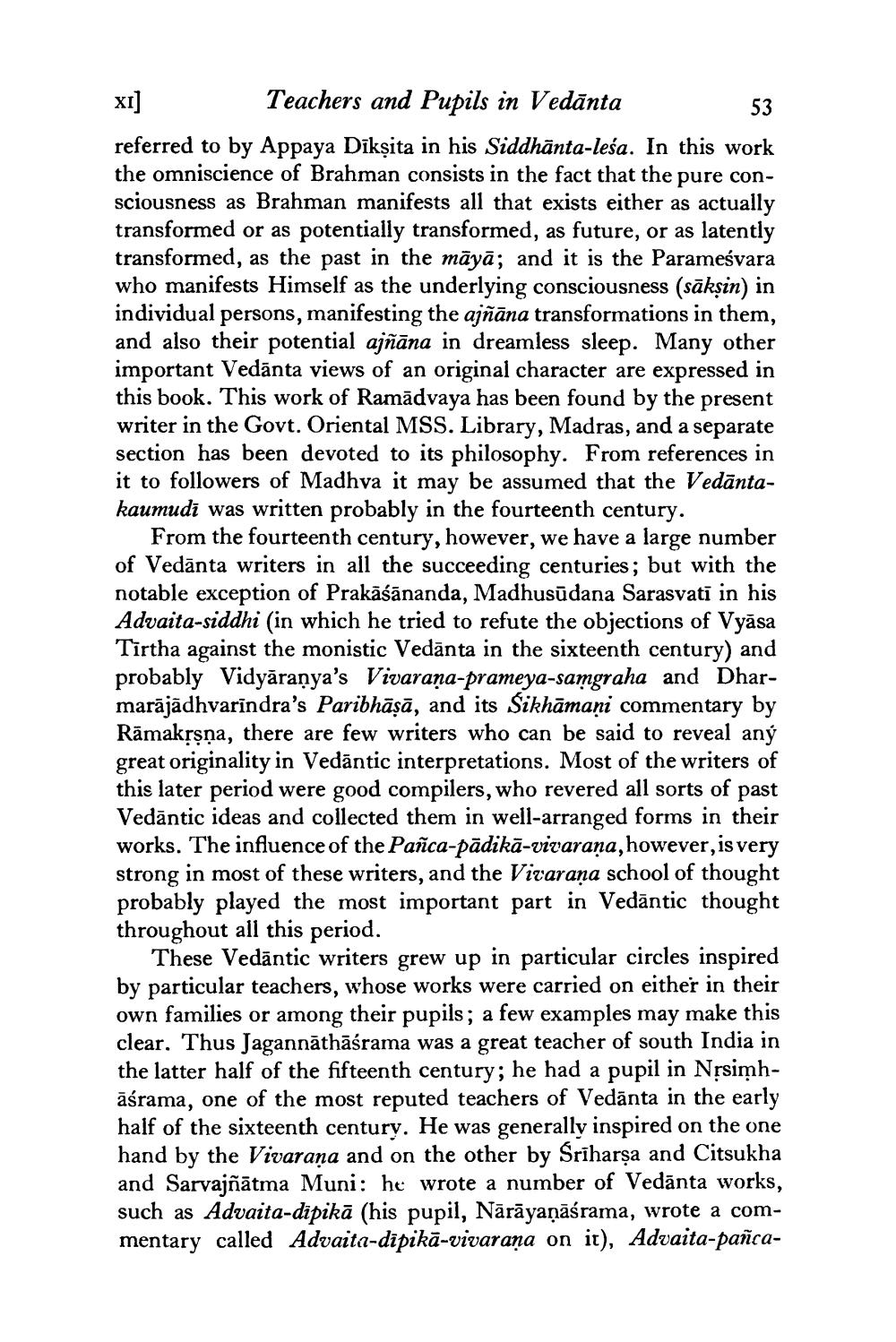________________
xi] Teachers and Pupils in Vedānta
53 referred to by Appaya Dikșita in his Siddhānta-leśa. In this work the omniscience of Brahman consists in the fact that the pure consciousness as Brahman manifests all that exists either as actually transformed or as potentially transformed, as future, or as latently transformed, as the past in the māyā; and it is the Parameśvara who manifests Himself as the underlying consciousness (sākṣin) in individual persons, manifesting the ajñāna transformations in them, and also their potential ajñāna in dreamless sleep. Many other important Vedānta views of an original character are expressed in this book. This work of Ramadvaya has been found by the present writer in the Govt. Oriental MSS. Library, Madras, and a separate section has been devoted to its philosophy. From references in it to followers of Madhva it may be assumed that the Vedāntakaumudi was written probably in the fourteenth century.
From the fourteenth century, however, we have a large number of Vedānta writers in all the succeeding centuries; but with the notable exception of Prakāśānanda, Madhusūdana Sarasvati in his Advaita-siddhi (in which he tried to refute the objections of Vyāsa Tirtha against the monistic Vedānta in the sixteenth century) and probably Vidyāranya's Vivaraña-prameya-samgraha and Dharmarājādhvarīndra's Paribhāṣā, and its sikhāmaņi commentary by Rāmaksıņa, there are few writers who can be said to reveal aný great originality in Vedāntic interpretations. Most of the writers of this later period were good compilers, who revered all sorts of past Vedāntic ideas and collected them in well-arranged forms in their works. The influence of the Pañca-pādikā-vivaraņa, however, is very strong in most of these writers, and the Vivaraṇa school of thought probably played the most important part in Vedāntic thought throughout all this period.
These Vedāntic writers grew up in particular circles inspired by particular teachers, whose works were carried on either in their own families or among their pupils; a few examples may make this clear. Thus Jagannāthāśrama was a great teacher of south India in the latter half of the fifteenth century; he had a pupil in Nșsimhāśrama, one of the most reputed teachers of Vedānta in the early half of the sixteenth century. He was generally inspired on the one hand by the Vivarana and on the other by Sriharsa and Citsukha and Sarvajñātma Muni: he wrote a number of Vedānta works, such as Advaita-dipikā (his pupil, Nārāyaṇāśrama, wrote a commentary called Advaita-dipikā-vivarana on it), Advaita-pañca




